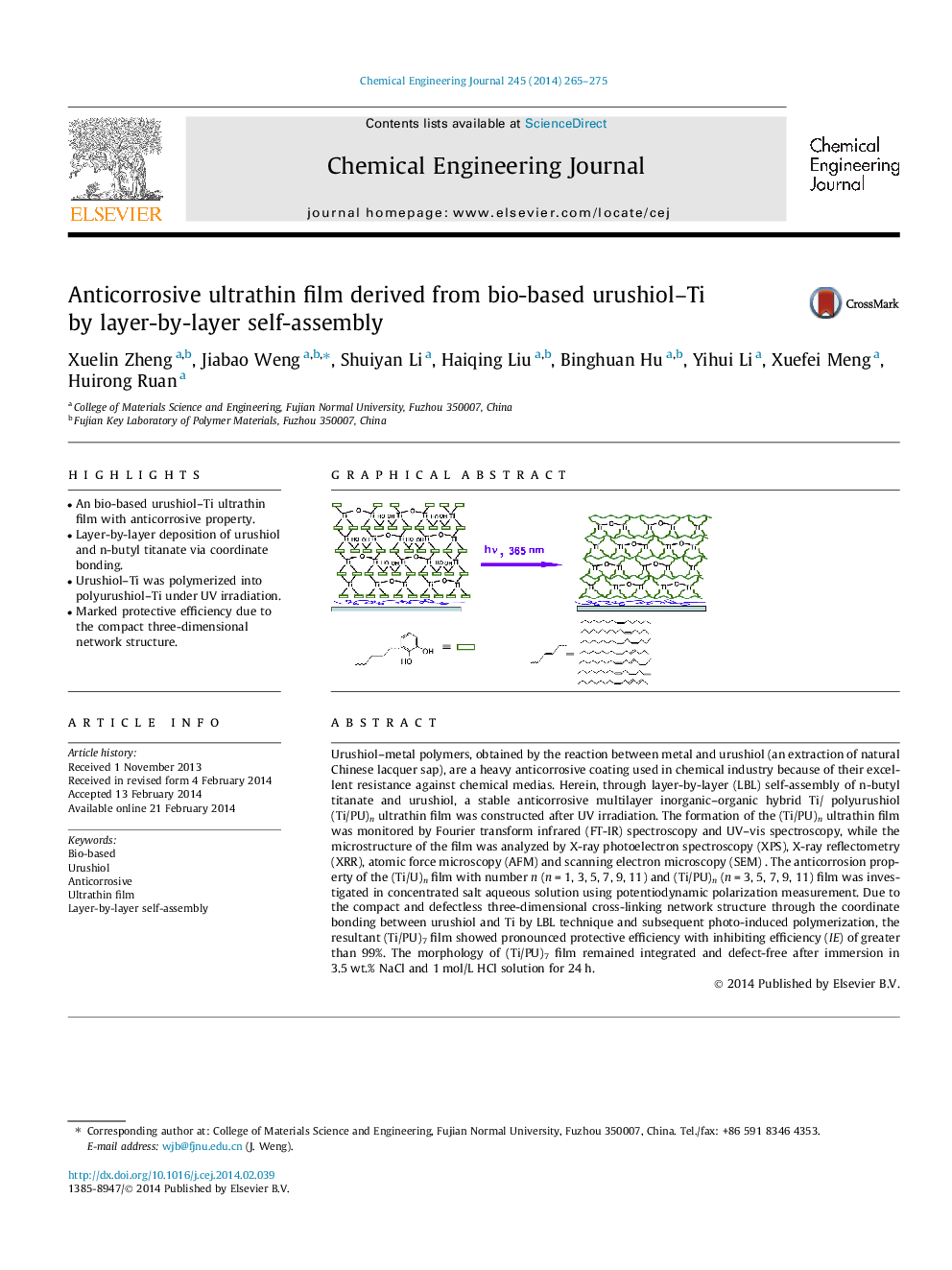| Article ID | Journal | Published Year | Pages | File Type |
|---|---|---|---|---|
| 147470 | Chemical Engineering Journal | 2014 | 11 Pages |
•An bio-based urushiol–Ti ultrathin film with anticorrosive property.•Layer-by-layer deposition of urushiol and n-butyl titanate via coordinate bonding.•Urushiol–Ti was polymerized into polyurushiol–Ti under UV irradiation.•Marked protective efficiency due to the compact three-dimensional network structure.
Urushiol–metal polymers, obtained by the reaction between metal and urushiol (an extraction of natural Chinese lacquer sap), are a heavy anticorrosive coating used in chemical industry because of their excellent resistance against chemical medias. Herein, through layer-by-layer (LBL) self-assembly of n-butyl titanate and urushiol, a stable anticorrosive multilayer inorganic–organic hybrid Ti/ polyurushiol (Ti/PU)n ultrathin film was constructed after UV irradiation. The formation of the (Ti/PU)n ultrathin film was monitored by Fourier transform infrared (FT-IR) spectroscopy and UV–vis spectroscopy, while the microstructure of the film was analyzed by X-ray photoelectron spectroscopy (XPS), X-ray reflectometry (XRR), atomic force microscopy (AFM) and scanning electron microscopy (SEM) . The anticorrosion property of the (Ti/U)n film with number n (n = 1, 3, 5, 7, 9, 11) and (Ti/PU)n (n = 3, 5, 7, 9, 11) film was investigated in concentrated salt aqueous solution using potentiodynamic polarization measurement. Due to the compact and defectless three-dimensional cross-linking network structure through the coordinate bonding between urushiol and Ti by LBL technique and subsequent photo-induced polymerization, the resultant (Ti/PU)7 film showed pronounced protective efficiency with inhibiting efficiency (IE) of greater than 99%. The morphology of (Ti/PU)7 film remained integrated and defect-free after immersion in 3.5 wt.% NaCl and 1 mol/L HCl solution for 24 h.
Graphical abstractFigure optionsDownload full-size imageDownload as PowerPoint slide
